Patina over Perfection
Frays & fades. Rips & stains. I’ve always been hard on my things—but I’ve learned to see it as something else: a slow process that adds character and story.
Those who’ve been reading my work for the last couple of years have likely picked up on a few recurring themes. Through the GENEs interviews, I’ve talked to people who own clothing and objects that are storied—not just in how they were acquired, but in how they’ve been worn and loved. Through my DiPartures writing, I’ve explored my desire to shop locally and support those who create and curate unique pieces. And through my INS(oev)IDE series, I’ve focused on trends I’m seeing on the ground, photographing one-of-a-kind items that often fit into a broader pattern or movement in style.
In all of these cases, I often find myself coming back to the word “patina.” Whether I’m admiring someone’s chosen piece in a GENEs interview or something I spotted on the street, patina has shown up in more than a few posts. Technically, the term refers to the surface wear or change that happens to metal, stone, or wood over time; think rust, blue copper or weathered fence board. Frequently, I’ve borrowed it in my own writing to describe the depth and uniqueness a piece of clothing develops after years of use.
When I think about patina in clothing, I picture a perfectly faded black band tee, a pair of paint-covered Carhartts, or a sun-bleached hat (spoiler alert).
Personally, I’m a patina machine, which is probably why I love seeing that level of wear in other people’s clothing too.
The people who know me best will all tell you: I’m hard on my things. My hats fade and lose their shape, my shoe soles wear out, my shirts have holes, my pants lose belt loops, my camera is banged up, lenses dusty and dented. Some might call it an “issue”—I see it as a gift. On the surface, sure, it might look like carelessness. But I’d argue it’s the opposite: I love using my stuff. I like being active. I put things through their paces. And I try to buy pieces that are ready for both the wear and the ever-shifting cycle of trend and function.
I’ve been this way as long as I can remember.
I had friends whose toys or trading cards stayed in pristine shape—mine always had chips or bent corners. My jeans were always blown out at the knees, and I used to go through shoes faster than anyone I knew. I’ve learned to embrace that. It’s become part of my aesthetic. I’ll wear a busted-up old cap with a brand new cardigan. I’ll keep rocking a long sleeve that probably should have been donated years ago. I buy pre-loved pieces because I want to give them a bit more life and because of the uniqueness of buying second-hand.
I’m constantly working on mastering the balance—too much patina and I look like I haven’t washed my clothes (or myself) in weeks. Too little, and the outfit feels too polished, too sterile—like I bought it all in one trip to the mall. No character. No history.
Buying new things is necessary for multiple reasons, but allowing a piece to obtain a character of its own through wear and tear should have more celebration in a system so focused on constantly putting out the next best thing.
In the GENEs interviews, when people talk about their favorite garments, there’s always a story tied to when or how they wore it. And you can see that story etched into the piece. That’s the character I love to document—and try to carry in my own wardrobe too.
Now to the part that sparked this post: the rise of pre-distressed clothing.
It all started with a bit of an impulse buy—one I’m a little embarrassed about, but one that makes a good example.
Recently, Puma did a collaboration with the Ninja Turtles through LaMelo Ball’s latest shoe release. A good friend of mine works at Puma, and a t-shirt on the website caught my eye: a “pizza shop” style graphic tee with the OG cartoon Turtles. I’m a big TMNT fan, I coach basketball, I love pizza, and I like a fun Puma collab—so I bought it.
When it arrived, though, something bugged me. The cotton was soft (great), but the shirt had a “pre-distressed” look. The graphic had that faux-faded style, trying to replicate the feel of a shirt that’s been washed hundreds of times, and the red cotton has some sort of “blotching” to make it look like its been worn a bunch.
I was disappointed.
Sure, I like the look. But I hate the methodology. I felt robbed of the ability to build the patina myself. And now I knew that hundreds of other people would have the exact same “distressed” tee. Not great.
I felt like it was trying to achieve one of my favorite long sleeves, my Skull Skates shirt I’ve owned for over 12 years. It’s reached that exact same level of wear (better, even)—but I earned it. I’ve worn it skating, biking, hiking, walking, running. It’s been left in the sun, drenched in the rain, washed a hundred times. The black is now a washed-out grey. And I love it.
Seeing those two shirts side by side really drove home the difference.
And once I started noticing that, I started seeing more of this trend.
There are many examples out there, and sometimes, they can be well done, but often, they come off as just fake. I don’t want to throw too much shade, but I will give one more example to drive my point home. I love Vans, have had a pair in rotation since the early 2000s. But, the new OTW Vans x Gallery Dept collab, yikes. The shoes are pre-splattered with paint and grease to replicate a silkscreen studio vibe. The description even says: “the bold paint splatter and subtle details capture the raw energy of a painter’s studio.” But it’s not raw—it’s simulated. It's mass-produced uniqueness.
Once again, fast fashion and high-end collaborations are taking something that takes time, effort, and life experience—and mass-marketing it. They’re offering an aesthetic shortcut. But in doing so, they’re cheapening the destination.
Look, I get it. Not everyone has the time to go buy a fresh pair of Vans and go spend the next year wrecking them in a screen printing studio. But that doesn’t mean we need to buy the story pre-told.
I’d encourage you: develop your own patina. Do it doing what you love.
I’ll end this with another one of my favorite examples. Maybe to inspire you to pick up that special item, and instead of being too precious with it, wear the hell out of it.
This is the Thheme hat I bought way back when I did my first interview with Tom. This hat has been everywhere—washed, worn for entire seasons, dunked in the ocean, crumpled in bags, dropped off a bike, soaked in sweat. It’s lived. And it looks nothing like any other hat. Even if Tom made another that looked the exact same, by this point, it would not look like this one.
It’s storied. It’s personal. It’s mine.
There’s something romantic—maybe even sacred—about having a piece that’s been with you for so long it starts to become you. Even if it eventually falls apart. These things don’t just look better when you wear them in — they feel better too.
— Thanks as always for reading.
If you’ve found yourself reading a few of these, please consider subscribing.
If you’re a current subscriber, and have been enjoying these posts, please consider finding the heart button and giving it a click, or better yet, share it with a friend.
I’d love for this series to reach more people!

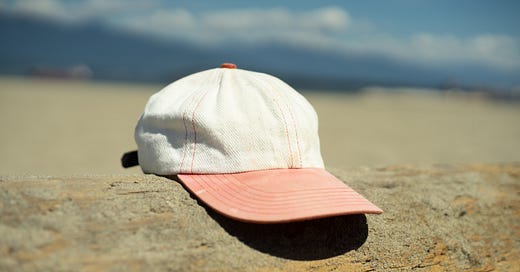


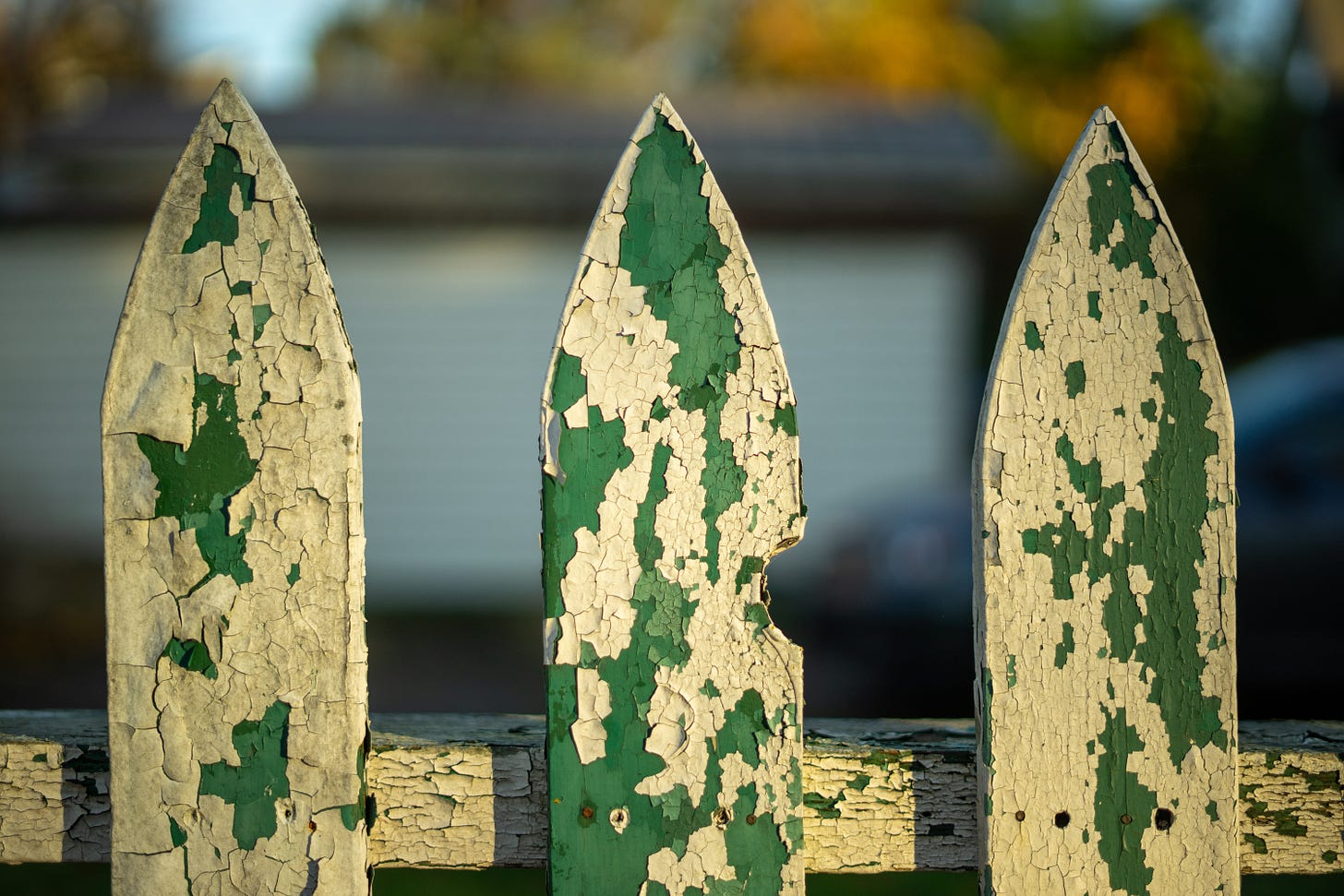

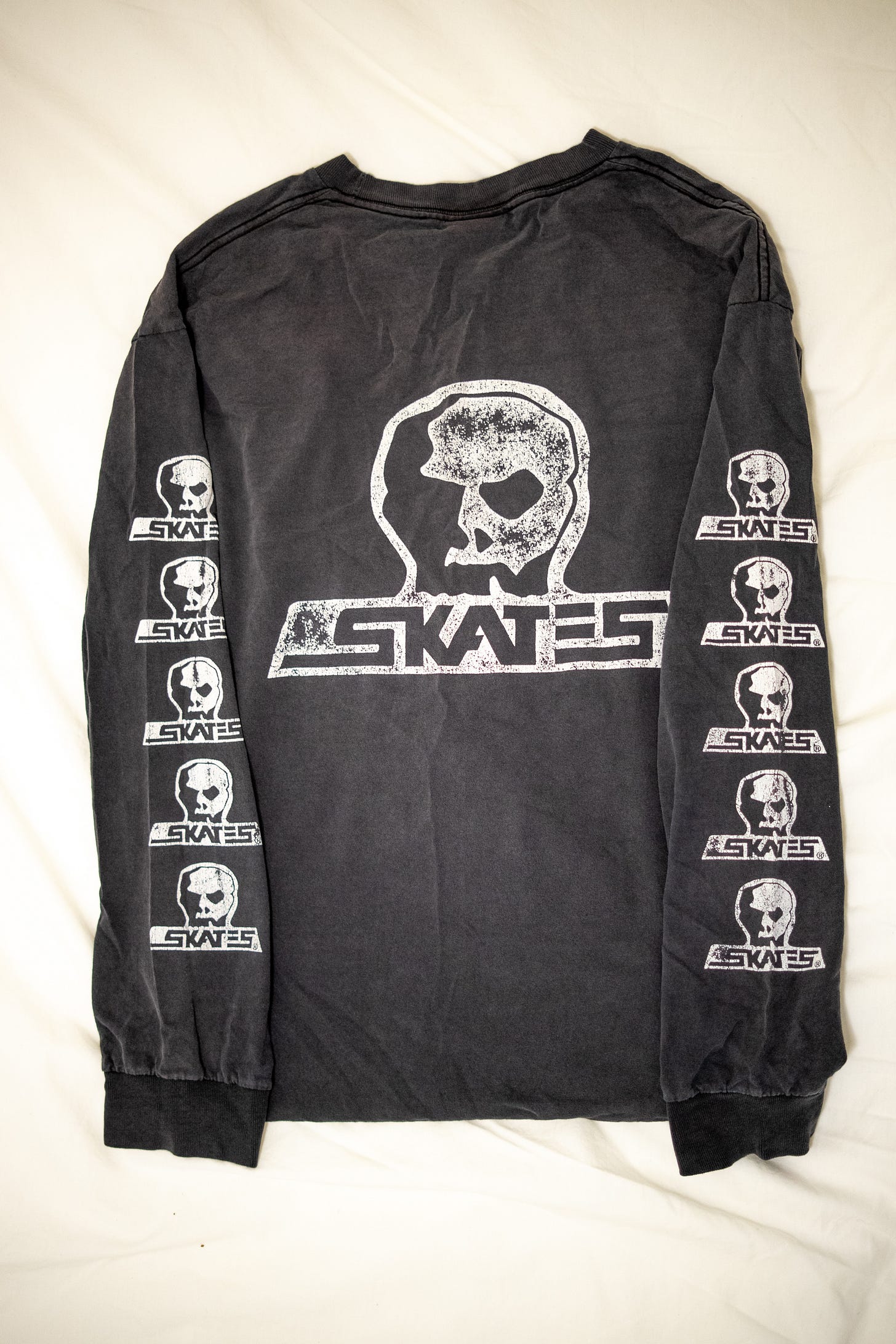

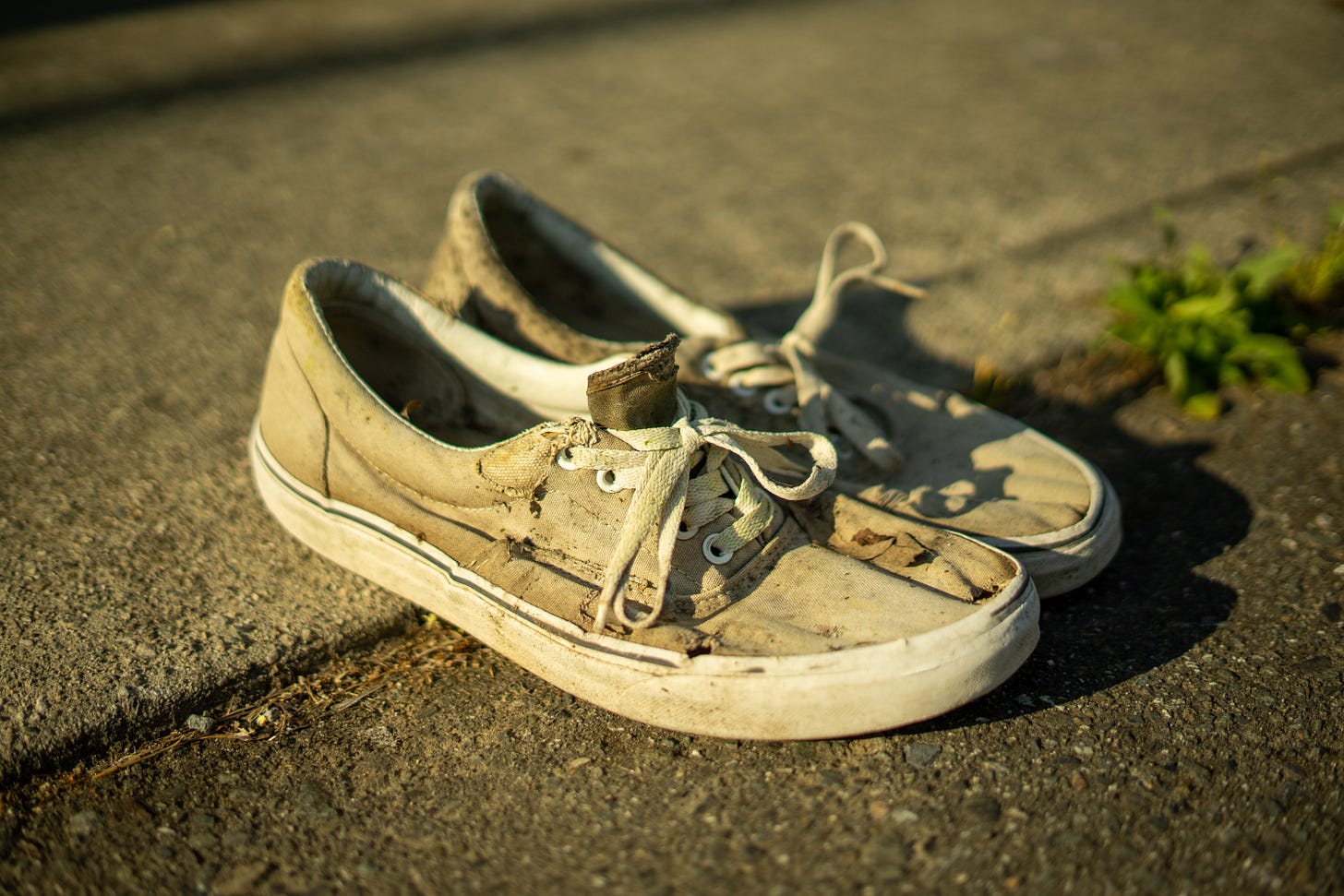
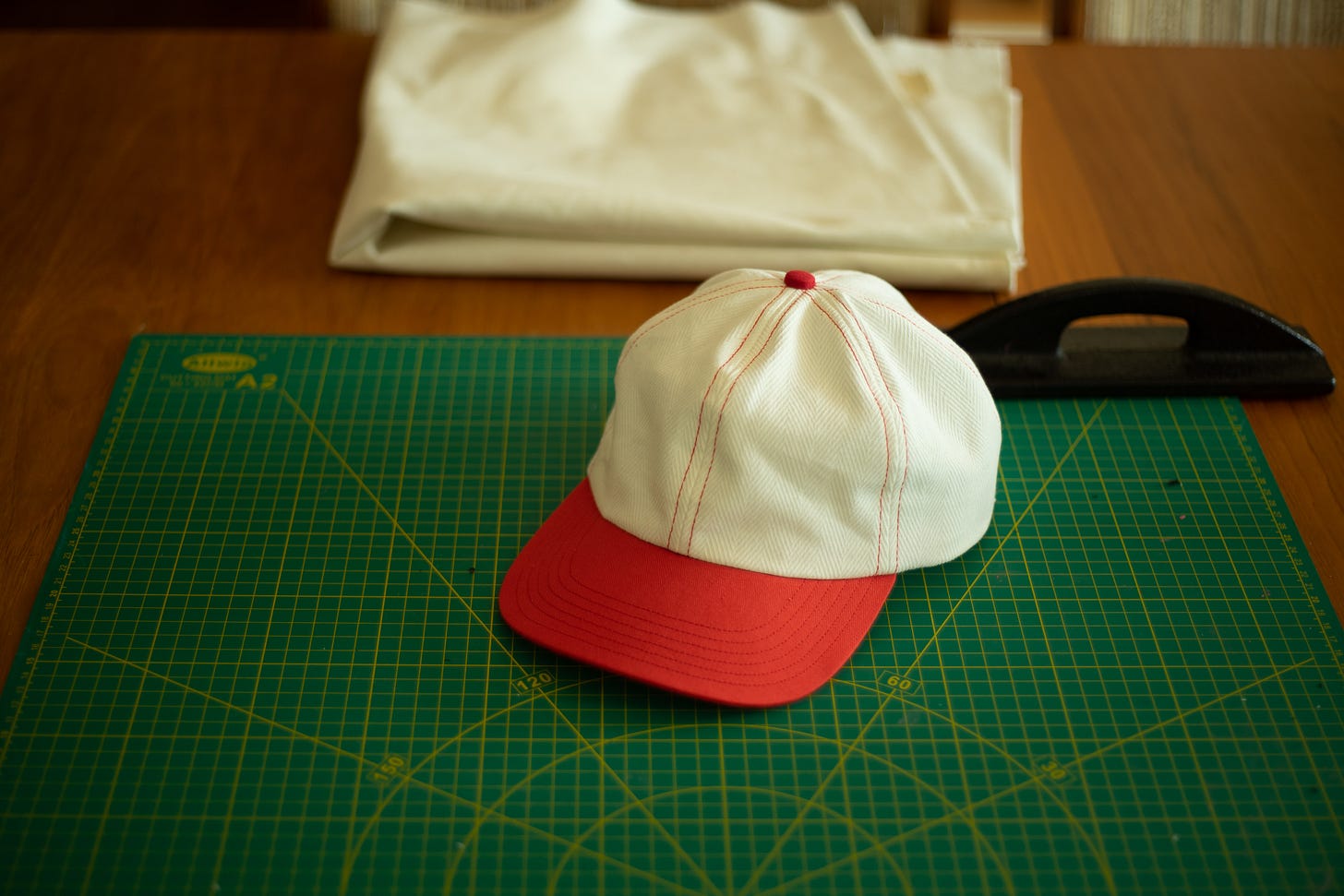

thank your for this!!!!! there’s nothing a hate more than a pre-distressed shoe.
I love patina. It's flavour!! Growing up, the poor kid in me held on to the idea of keeping things pristine, but trashing it up was a satisfying act of rebellion. Feeling all of what your saying here